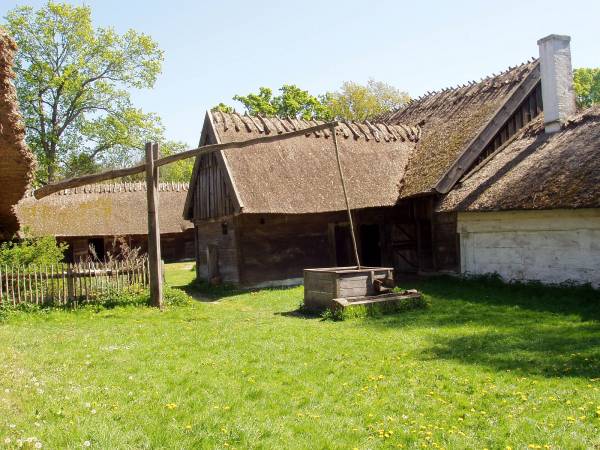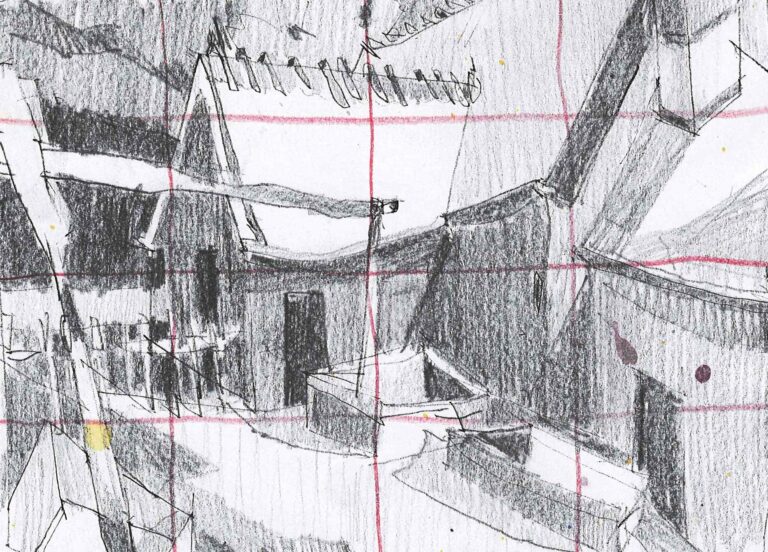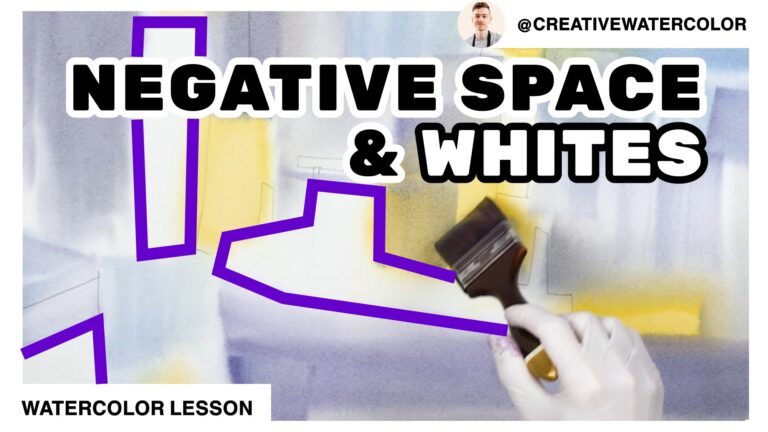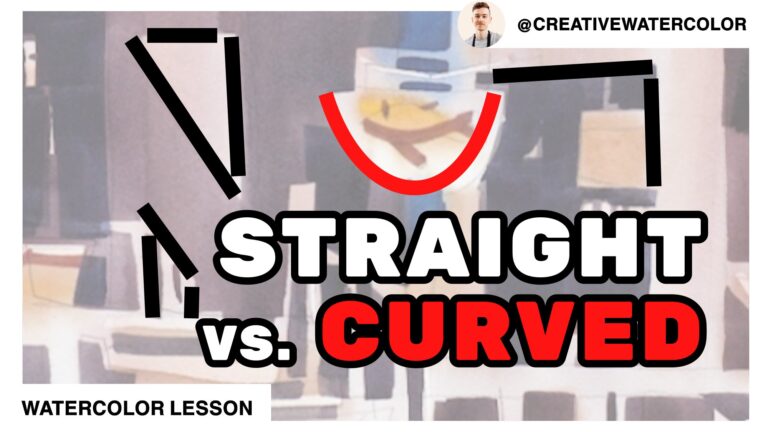How to use shadows creatively? Find out in this watercolor tutorial where I demonstrate and explain how shadows can be used in a creative way.
How to Paint Shadows Creatively Watercolor Tutorial - List of Materials
- Paints
Winsor & Newton Winsor Yellow
Winsor & Newton Permanent Rose
Winsor & Newton Permanent Alizarin Crimson
Winsor & Newton Winsor Blue Green Shade
American Journey Joe’s Green (phthalo) - Brushes
Winsor & Newton One Stroke Sable 1/2″
Winsor & Newton Series 995 Synthetic 1″
Robert Simmons Skyflow Synthetic 2″
Davinci Cosmotop Mix B #24
Rosemary & Co Pure Sable Series 90 #6 - Paper
Bockingford 140lb Cold Press, 15″ x 22″ / 38 x 56 cm
How to Paint Shadows Creatively Watercolor Tutorial - Reference Pictures


How to Paint Shadows Creatively Watercolor Tutorial - The Lesson
Hello everybody and welcome back to my studio! In the previous video our goal was to create one large, foundational silhouette shape. We didn’t copy our subject but instead were guided by the quality of our shape. Working this way helps us understand the structure of our subject and its visual configuration in a painting scenario, meaning it teaches us the importance of relating our shapes to our picture’s borders, instead just to our reference material.
The shape from our previous video serves us as a kind of a foundation, a guide. Our lesson today is: how to use shadows creatively to explain form. This is what we’re going to do: we’re going to place a shadow pattern over the original silhouette. This will help differentiate between individual objects. We will proceed in a similar manner to the previous wash – we will paint one interconnected shape (the shadow pattern). Shadows are very useful in explaining form. We can use them to render our objects in a way that suggests the third dimension. One thing that you may not realize is that shadows in a painting can be created independently of the lighting conditions you see in your reference material. In other words, you don’t have to copy them from nature. That is how I’m approaching this painting. But, of course, it’s completely valid to use a shadow pattern found in nature – as long as it makes for good shapes. Usually we do a combination of the two, copy some basic shadow pattern structure and improve on those parts that don’t fit.
Here’s a few tips on painting a shadow pattern:
- In terms of value we usually use dark-middle value, that is one step darker than the underlying value of our first, “foundation” silhouette. This makes for readable and believable visual representation of shadows.
- In terms of color, subtle changes of color are usually the best way to go about it. That way the wash retains its integrity and relates better to the wash underneath.
I hope you find these tips useful. If you enjoyed the video, please leave a comment, like and subscribe. It does a lot of good because YouTube then shows these videos to a wider audience. Thanks for watching and I’ll see you in the next one!




